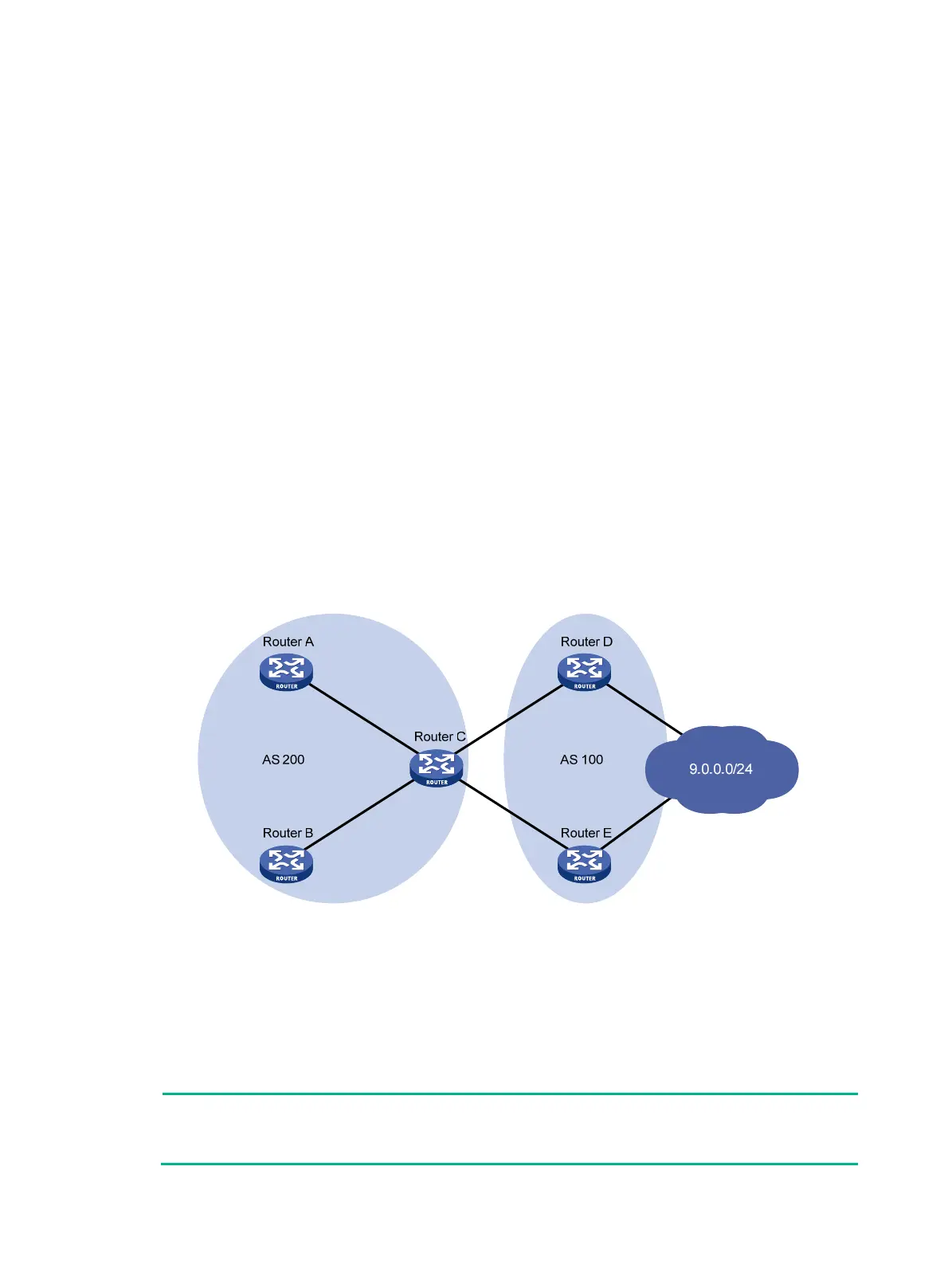183
• BGP load balancing through route recursion.
The next hop of a BGP route may not be directly connected. One of the reasons is next hops in
routing information exchanged between IBGP peers are not modified. The BGP router must find
the directly-connected next hop through IGP. The matching route with the direct next hop is
called the "recursive route." The process of finding a recursive route is route recursion.
The system supports BGP load balancing based on route recursion. If multiple recursive routes
to the same destination are load balanced, BGP generates the same number of next hops to
forward packets. BGP load balancing based on route recursion is always enabled by the
system rather than configured by using commands.
• BGP load balancing through route selection.
IGP routing protocols, such as RIP and OSPF, compute the metrics of routes, and implement
load balancing over the routes with the same metric and to the same destination. The route
selection criterion is metric.
BGP has no route computation algorithm, so it cannot perform load balancing according to the
metrics of routes. BGP implements load balancing over the routes that meet the following
requirements:
{ The routes have the same AS_PATH, ORIGIN, LOCAL_PREF, and MED attributes. (When
the as-path-neglect keyword is specified in the balance command, BGP implements load
balancing over routes with different AS_PATH attributes. Use the as-path-neglect keyword
according to your network, and make sure a routing loop does not occur.)
{ The routes are all reflected or not reflected by the route reflector.
BGP does not use the route selection rules described in "BGP route selection" for load
balan
cing.
Figure 52 Network diagram
As shown in Figure 52, Router A and Router B are IBGP peers of Router C. Router D and
Router E both advertise a route 9.0.0.0 to Router C. Router C installs the two routes to its
routing table for load balancing if the following conditions exist:
{ Load balancing with a maximum number of two routes is configured on Router C.
{ The two routes have the same AS_PATH, ORIGIN, LOCAL_PREF, and MED.
After that, Router C forwards to Router A and Router B a single route that has NEXT_HOP
changed to Router C and other attributes changed to those of the optimal route.
NOTE:
BGP load balancing is applicable between EBGP peers, between IBGP peers, and between
confederations.

